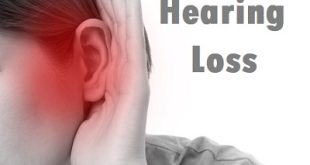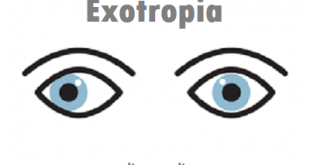Definition
Ear barotrauma is ear damage caused by a difference in pressure between the inside of the ear and the air around you. It can cause pain and may lead to lasting hearing loss. It may affect the outer, middle, or inner ear and can harm the eardrum. The eardrum is between the outer and middle ear. Harm to the eardrum can cause bleeding or other damage to the outer, middle, or inner ear.
How pressure works in the ear
The middle ear is an air-filled hole. It sits between the inner and outer parts of the ear. It has 3 small bones that help send sound. It also has the opening of the Eustachian tube. This is a small tube that leads from the middle ear to an area behind the nose. This tube stays closed most of the time.
For your hearing to work, the pressure in the middle ear has to match the pressure in the air around you. If the pressure does not match, the Eustachian tube will open. This makes the pressure in the middle ear and the air around you the same.
Types of Ear Barotrauma
There are several different types of ear barotrauma:
Middle-ear barotrauma
The most common is middle-ear barotrauma, usually caused by ineffective or failed equalization, or a blockage of the Eustachian tubes. It is characterized by an inability to equate the pressure in the middle ear to that of the surrounding water pressure, resulting in the creation of a vacuum on descent, or a build-up of pressure on the ascent. The eardrum and the tissues of the middle ear sustain damage, causing the compartment to fill with blood and fluids. Symptoms include a feeling of fullness inside the ear, hearing that is either muffled or lost completely, and an eardrum that appears red and either swollen outwards or retracted inwards. Usually, these symptoms will develop upon surfacing, but can appear several hours later.
Inner-ear barotrauma
Inner-ear barotrauma typically occurs when divers equalize too forcefully or cannot equalize at all. The practice of holding the nose and blowing is known as a Valsalva maneuver. If performed too hard when the Eustachian tubes are blocked, the fluid in the inner ear becomes over pressurized, causing the round window to rupture. Inner-ear barotrauma can also occur if a diver fails to equalize on the descent. In that case, the vacuum created in the middle ear affects not only the eardrum but the oval window as well. If the oval window contracts too far towards the middle ear, the ossicles can puncture it, causing fluid to enter the middle ear. Symptoms of this kind of barotrauma include sudden vertigo, vomiting, a roaring sound in the ears and hearing loss.
Outer-ear barotrauma
Outer-ear barotrauma occurs when the ear canal itself is blocked, possibly by a tight-fitting hood, ear buds, or earwax buildup. The obstruction creates an air pocket between itself and the eardrum, which turns into a vacuum as ambient pressure increases. This can cause the superficial rupture of blood vessels in the ear canal or, more seriously, damage to or perforation of the eardrum itself. Typical symptoms of this kind of barotrauma include bleeding and seeping fluids from the ear, and possible hearing loss. If you suspect this kind of barotrauma, you should not put any kind of drops in your ear, as the barrier between your outer and middle ear has now been compromised and liquid entering the middle ear will cause extreme vertigo.
Ear Barotrauma risk factors
Any condition that blocks the eustachian tube or limits its function can increase the risk of airplane ear. Common risk factors include:
- A small eustachian tube, especially in infants and toddlers
- The common cold
- Sinus infection
- Hay fever (allergic rhinitis)
- Middle ear infection (otitis media)
- Sleeping on an airplane during ascent and descent, because you can’t yawn or swallow, which can equalize the pressure
Causes of Ear Barotrauma
Ear barotrauma results from a pressure imbalance between the inside of the ear and the outer environment. This pressure imbalance only happens in certain circumstances, such as:
- Scuba diving
- Air travel
- Hyperbaric oxygen therapy for wound healing
- Exposure to an explosive blast
But most people in these situations don’t develop ear barotrauma. This condition happens when there is also a problem with the eustachian tube. Anything that causes inflammation or fluid buildup in the area around the tube may cause it to not open normally. These may include factors such as:
- Allergies
- Sinus congestion
- Having a cold or other infection
- Anatomical abnormalities
- Exposure to irritants such as tobacco smoke
- Certain hormonal changes (for instance, during pregnancy)
Symptoms
There are many different symptoms of ear barotrauma, with the severity and duration of those experienced varying from case to case.
Some of the most common symptoms of ear barotrauma include:
- Dizziness or vertigo
- Ringing in the ears
- A feeling of fullness within the ear
- Mild hearing loss
- General discomfort within the ear
People experiencing a more severe case of ear barotrauma may also experience:
- Nosebleeds
- Ear pain
- Greater difficulty hearing
- Increased pressure within the ear
- Bleeding from within the ear
Although most cases of ear barotrauma resolve themselves over time, some people with the condition may experience prolonged hearing loss and dizziness. For those with ear barotrauma, tinnitus (a ringing in the ears) can also be another persistent symptom. It’s best to follow your GP or audiologist’s advice and seek treatment if your symptoms persist, or if you experience any new symptoms.
Complications of Ear Barotrauma
Often the symptoms following ear barotrauma go away with time. But it sometimes causes symptoms that don’t go away, such as:
- Dizziness
- Ringing in the ears
- Hearing loss (which may require a hearing aid)
Following your healthcare provider’s advice about possible surgery or bed rest may help reduce your risk of these complications.
Diagnosis and test
Ear barotrauma is usually diagnosed based on the history and symptoms obtained from the patient
Otoscope: This is an instrument with light that is used to examine the ear. The signs that are generally looked out for using an otoscope are:
- A small bulge of an eardrum, either inward or outward
- Tear in the eardrum
- Presence of blood or fluid on the other side of the eardrum
Audiometry: This is a test performed to estimate the individuals hearing ability. Audiometry test is recommended when there is loss of hearing.
Treatment and medications
For most people, airplane ear usually heals with time. When the symptoms persist, you may need treatments to equalize pressure and relieve symptoms.
Medications
Your doctor might suggest you take:
- Decongestant nasal sprays
- Oral decongestants
To ease discomfort, you can take a nonsteroidal anti-inflammatory drug, such as ibuprofen (Advil, Motrin IB, others) or naproxen sodium (Aleve), or an analgesic pain reliever, such as acetaminophen (Tylenol, others).
Self-care therapies
- With your drug treatment, your doctor will instruct you to use the Valsalva maneuver. To do this, you pinch your nostrils shut, close your mouth and gently force air into the back of your nose, as if you were blowing your nose.
- Swallowing or chewing gum
- Yawning
- Taking deep breaths, inhaling and exhaling
- Don’t sleep during takeoffs or landings so that you can perform these exercises
- Use decongestant pills, allergy medication, or nasal sprays
Surgery
Surgical treatment of airplane ear is rarely necessary. Even severe injuries, such as a ruptured eardrum or ruptured membranes of the inner ear, usually heal on their own.
However, in rare cases, an office procedure or surgery might be needed. This might include a procedure in which an incision is made in your eardrum (myringotomy) to equalize air pressure and drain fluids.
Ear Barotrauma prevention
You can do things to help prevent ear barotrauma. If you are congested from a cold or allergies, you may want to delay flying or scuba diving. Or you can take medicine such as a decongestant or antihistamine. These may help your ears equalize more easily and prevent ear barotrauma.
You can use certain methods to open the eustachian tube during pressure changes, such as:
- Swallowing frequently
- Pinching your nose, closing your mouth, and then acting as if you were going to breathe out through your nose
- Chewing gum or candy
- Using special earplugs when flying
Ventilation tubes are another option for some people whose eustachian tubes don’t work well or for those who need to fly frequently. They may also benefit you if you need hyperbaric oxygen therapy for wound healing. A surgeon places these tubes in the eardrum, and they prevent future pressure differences. (Ventilation tubes can’t prevent ear barotrauma caused by diving.)
 Diseases Treatments Dictionary This is complete solution to read all diseases treatments Which covers Prevention, Causes, Symptoms, Medical Terms, Drugs, Prescription, Natural Remedies with cures and Treatments. Most of the common diseases were listed in names, split with categories.
Diseases Treatments Dictionary This is complete solution to read all diseases treatments Which covers Prevention, Causes, Symptoms, Medical Terms, Drugs, Prescription, Natural Remedies with cures and Treatments. Most of the common diseases were listed in names, split with categories.








I can hear but if someone is talking to me I only hear noise. I don’t get what is he or she is saying but only noise
l don’t get distant sound well not to talk of if somebody is whispering. Somebody beside me can hear a sound while I find it difficult to hear. Please help me what to do. l encounter challenges with my boss who speaks in low tone.
my ear get block and i found it difficu
lt to hear clearly. What may be the problem
my ear is routing with out no harm please I need solutions and ear germ is worrying me
my hearing is not good enough ,if I am on call I don’t hear the person well ,I need treatment and prevention, and I also have dizziness
good afternoon sir or ma ,pls I want to know the causes of airplane ear and body Itch after bath ,dizziness, sense of smelling and pls what is the solution. THANKS.
Please have a glance at the post for causes and solutions.